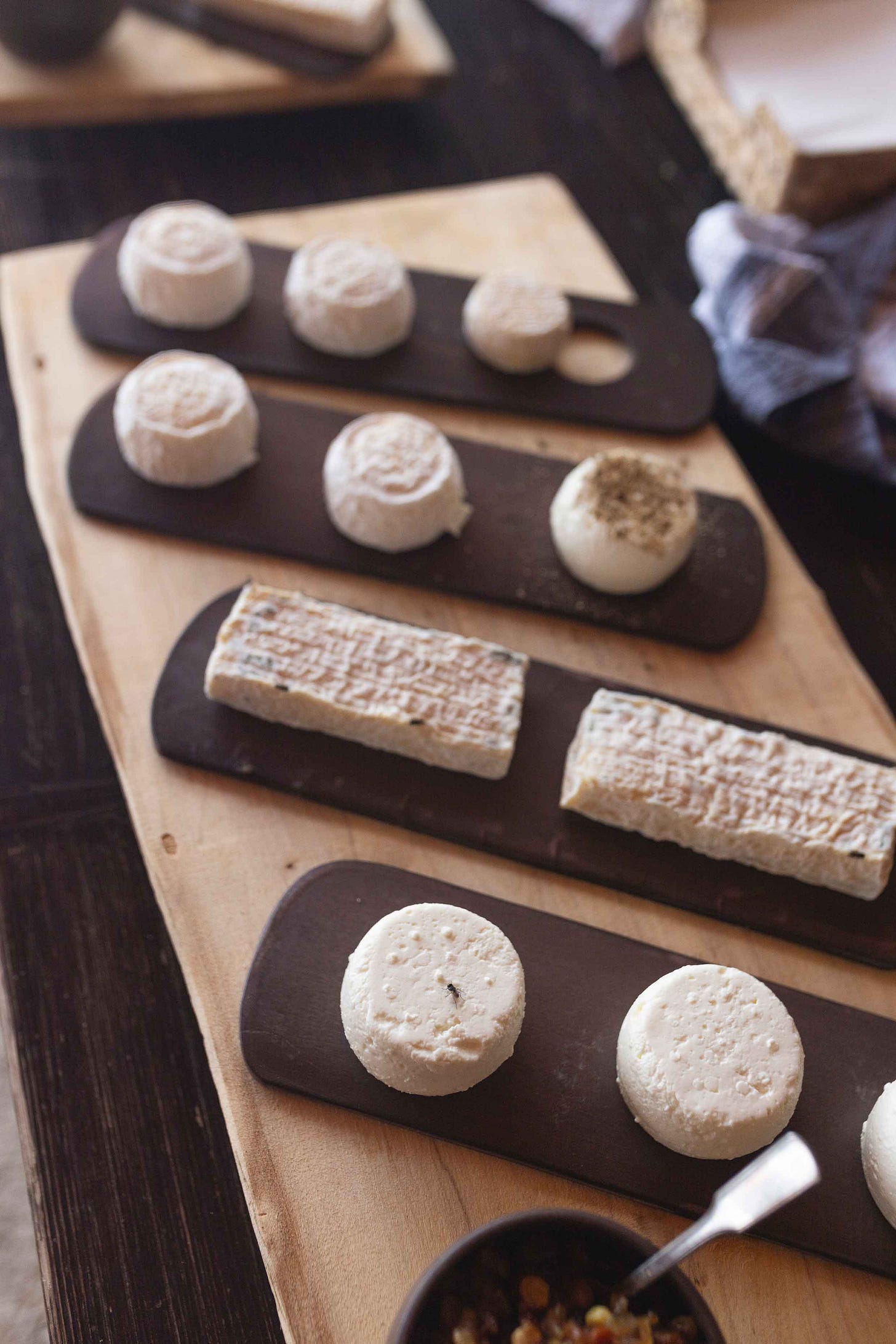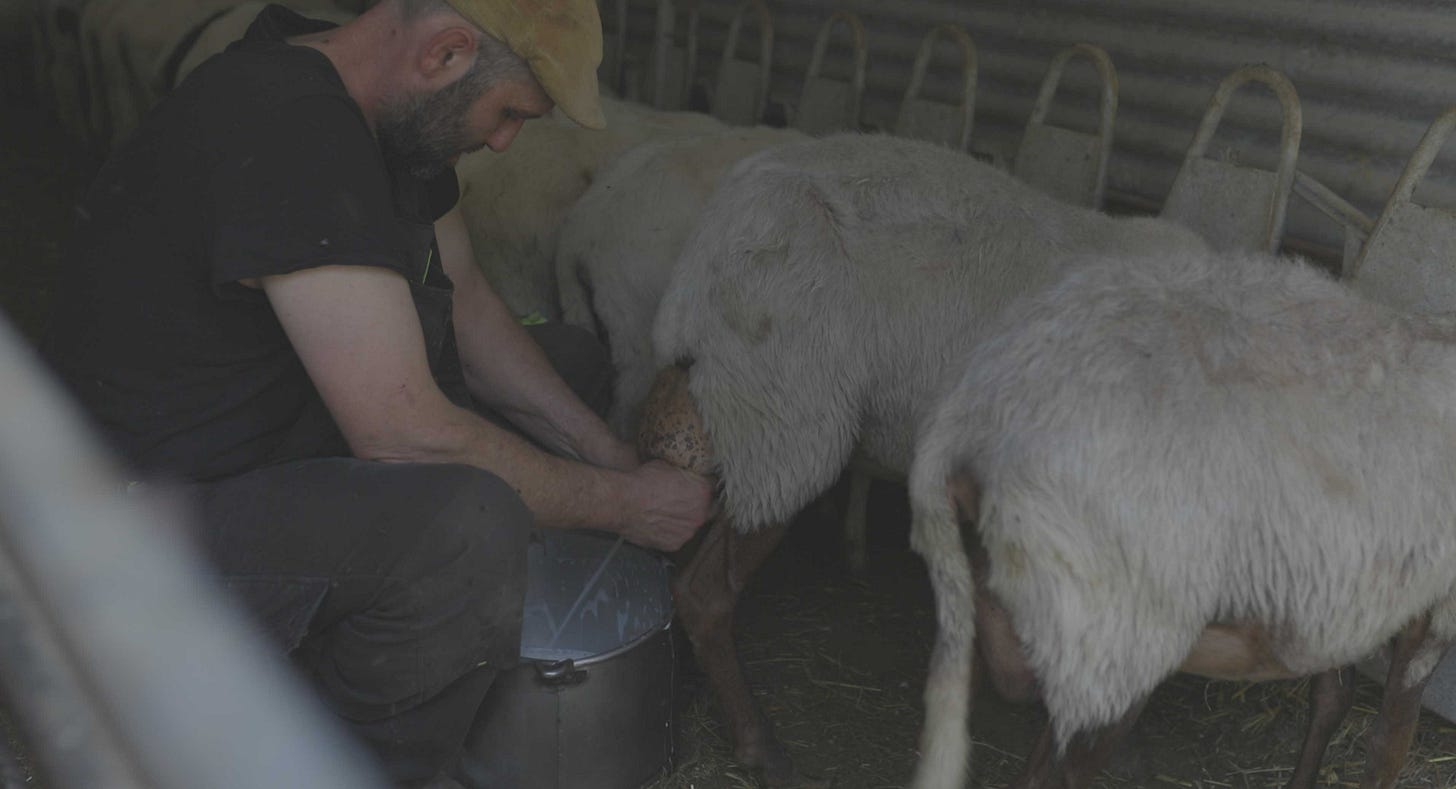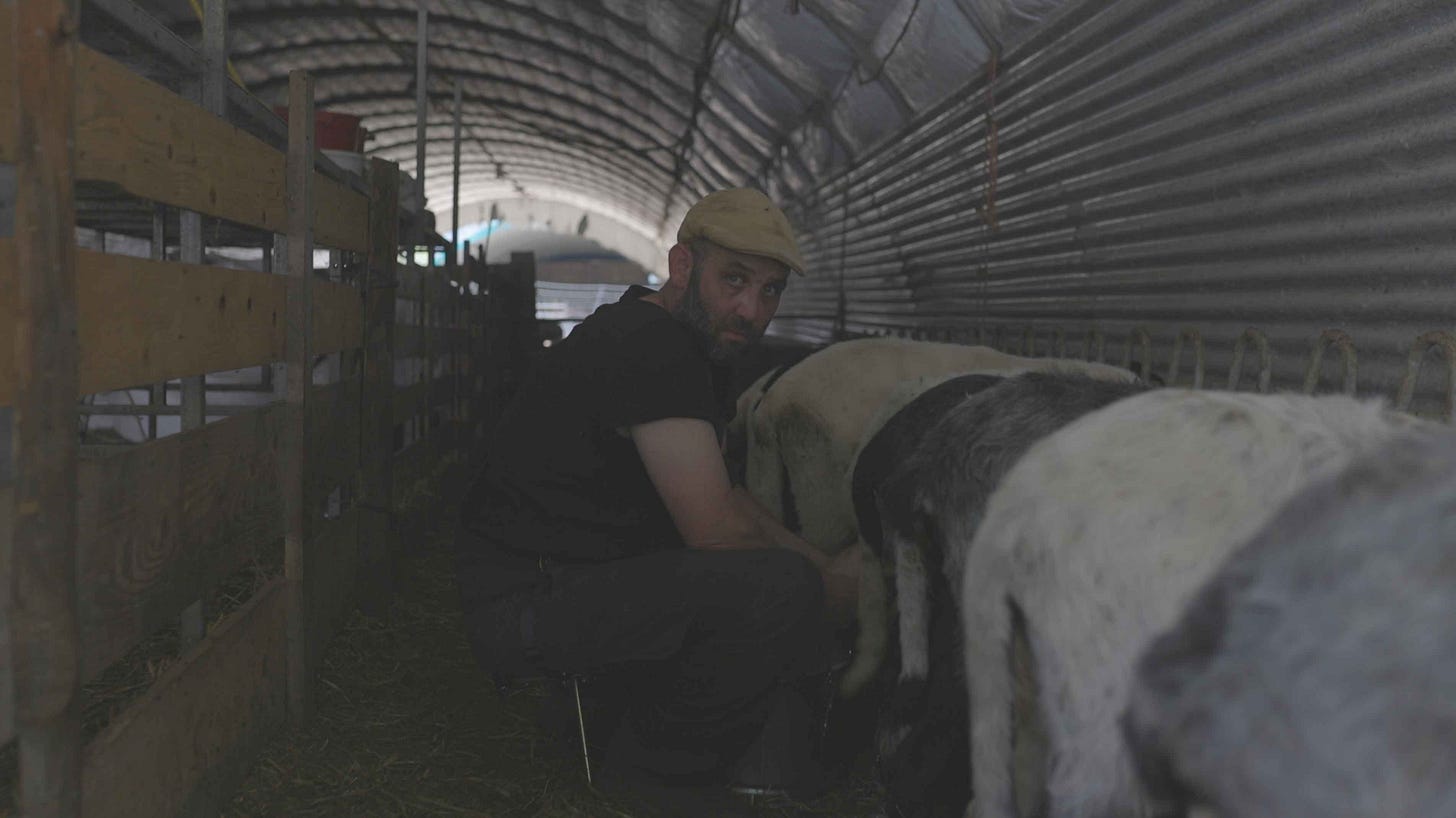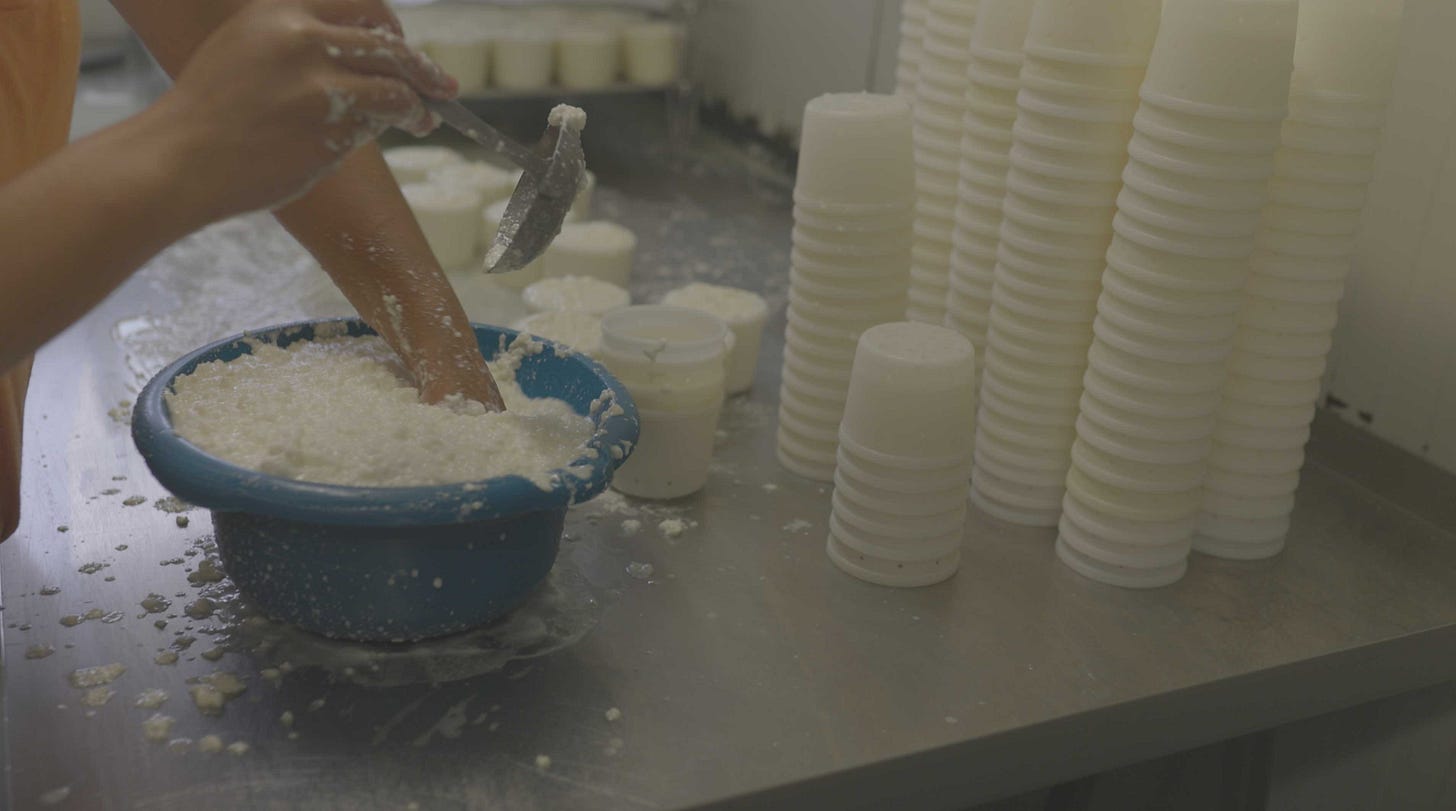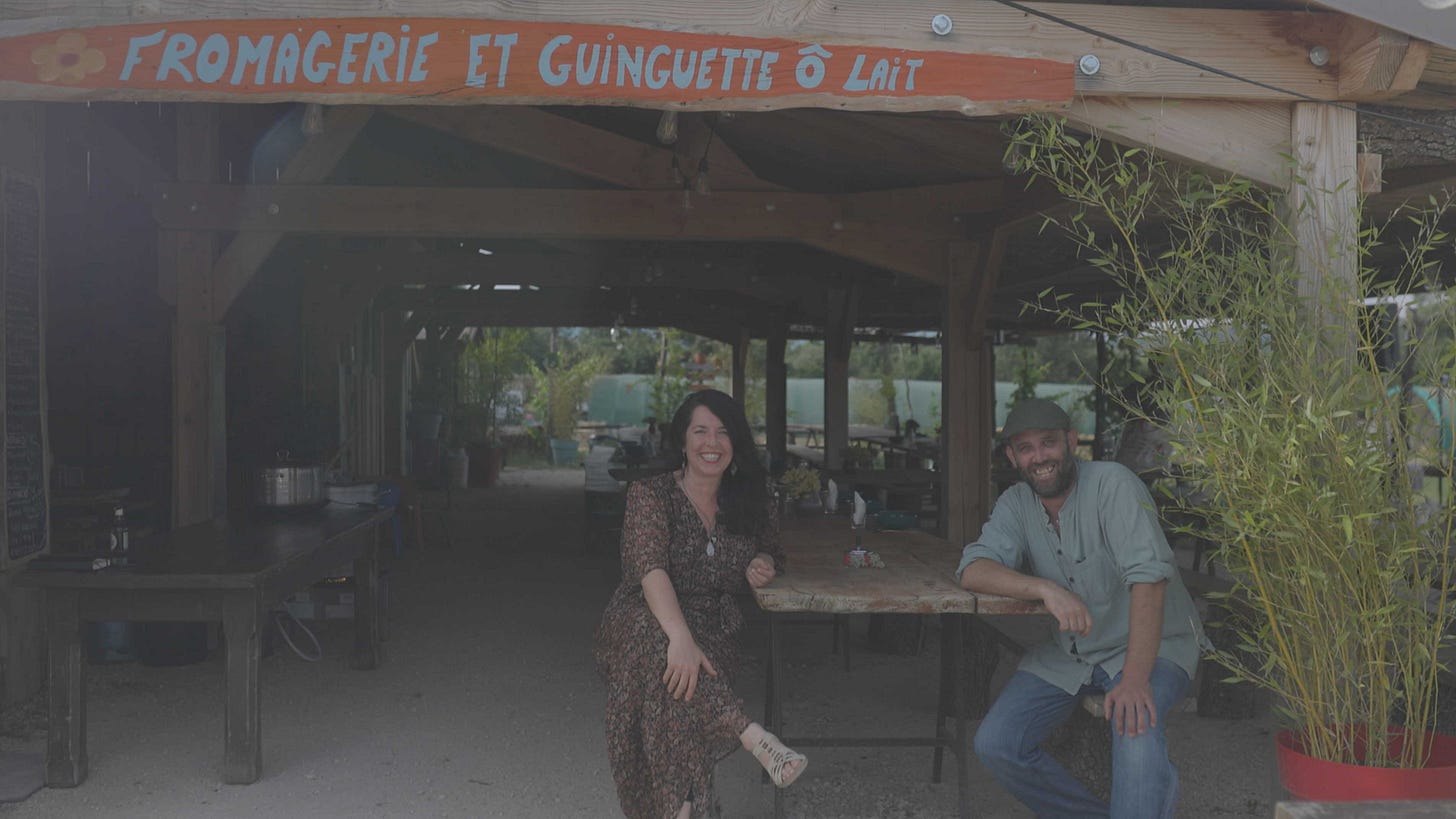THE MORTALITY OF CHEESE // Part Three: The Fly is Life
The scent of sticky lanolin on my hands from the udder of a Sardinian ewe teaches me the value of life itself in a visit to makers of a natural starter sheep's cheese in Provence
In this final piece on a recent trip to Provence, I visit makers of a natural sheep’s cheese, who seem to have got the whole life thing pretty right. I encountered that wonderful way of the genuine artisans, whose recipes and methods emerge from a life lived engaging with their immediate landscape to produce food. Absolute authenticity, living with nature. It affirmed the direction of where I am headed in my research, which is to get us to re-trust the makers who are still connected to a deep, established mindset, where common sense and skill are king.
The trip was with my cheese family MONS to film the production of the make, which will be finished and edited in time for release next season as the new cheeses are being made. Photos are video stills as I was behind the video camera. Thanks to Jon Thrupp and MONS cru for facilitating this awesome trip.
Paid subscribers get access to a clip of David smashing out one of his amazing tunes on guitar post-milking, and a discount code to access his cheese!
THE MORTALITY OF CHEESE // Part Three: The Fly is Life
by Max Jones
I adore the way people change in physical appearance and feeling depending on what their purpose is on this earth, as they adapt to the life they lead. You know what I mean, like the dropped shoulders and ripped forearms of a sheep farmer. Or the calloused fingers of a guitarist, or the affirming sturdiness of those that throw clay. Or the bulging golf-ball thumb muscles and sausage fingers of those who milk by hand, or the creased features of a face touched by laughing and the sun. And then how the souls of these folk pour out of them as they live and work and build and belong. We forget the lovely authenticity of how physical spaces can feel depending on how they operate, and by whom.
I was reminded of this by visiting David and Fanette Ladu at their Ferme du Plateau in Vaucluse, makers of Castillon. A small, raw milk, natural starter gem of a thing and by quite a long chalk, my favourite cheese of the year. They made me think of common sense, nature and freedom in their healthy approach to an honest life lived up there, on the plateau. It is well to note that David has the old soul of a shepherd.
The drive up to the farm was through desert dust and pale, over-exposed views that made me squint through the shimmering heat. Stepping out of the car and crunching into the yellow dirt I could see the farm was made up of scattered trailers and small buildings that circled a grand, open-plan, central structure built of cedar and cypress with a large bergerie tunnel on its far side in which his sheep sheltered in the shade.
We walked into their space which felt pleasant and cool in an instant. Inside were dining tables, a kitchen and shipping containers that served as different cheese-making rooms, a compost loo and a small pottery studio shed. At the front of the building I could see a small stage with a backdrop of a large flower-filled field in which the herd would graze, and whose bells would tinkle and clank along with the music of the bands that play there every Friday evening.
The space breathes with openness and life of the farm, with windows looking into and through the cheese rooms- nothing is hidden and nowhere feels designated as inside or outside. It has that pleasant feeling you have when approaching someone who has outstretched arms, ready to embrace you. A cultured, cool caravanserai hidden in Provence, this positive place is the physical manifestation of David and Fanette’s deep love of living.
We joined David for the milking which happens once a day, a choice of theirs to facilitate a slightly more relaxed lifestyle, busy with joyful happenings. David Ladu, a friendly and calm man in his late forties with the timeless face of a shepherd, hand-milks around one hundred and twenty ewes that he lets into the milking stand thirty at a time. Once he has gone down the row, he reverts back on himself, milking the same group for a second time. This is to re-milk or “reblocher” the animals as they have already produced milk in this brief period, a process you might know from the famous Savoie cheese, Reblochon. It’s fantastic to see because in the back of my mind I often play with the thought of one day getting a herd of my own, making cheese in the mountains, and the idea of milking once a day somehow makes this seem more achievable.
Born in Provence, David has Sardinian roots and his herd of Sardinian sheep were brought over to France in an epic transhumance on foot by his grandfather, as they would do well in the similar climate and vegetation. In the dark humid haze of the bergerie, he tells me things looking up from his milking stool, whilst squeezing away, brushing off biting flies that are drunk with the heady animal smells in the heat.
“Everything we do is natural. I don’t want or need machines or chemicals. This way of life for me means happiness in its simplicity. It is hard work, but I have learned that by cheesemaking with a natural starter and milking by hand, there are fewer problems, fewer things to go wrong, fewer things to break down or replace or clean. The connection to the milk’s transformation is more immediate, part of me. These natural methods I learned from my grandfather are very empowering as I am not dependent on anything but myself and my animals.”
I ask him about the future of his cheese Castillon, a beautiful small puck the size of a block of surf wax that at its best stage of affinage is covered in a pale wrinkling of geotrichum that breaks down the cheese beneath to a light layer of savoury ooze, and a fluffy, cloud-like texture at its core. This texture is what it’s all about, something that Fanette figured out whilst working the curd with her hands, a tactile process informed by her skill with clay, unique to her and her cheese. The flavour is lactic and fresh, with a light button-mushroominess and distinct fenugreek finish (shoutout to Ben for that one!).

Whilst watching him rhythmically squirt jets of milk that frothed up his metal pail, I heard the clack and crunch of boules far away, with cheers from his children playing pétanque in the gravelled lane.
“I can make my own rennet from my own herd. It is not allowed by law, but if we face a societal collapse, I can still make the cheese identically to how I do now, to how it was always done, with just the land and the herd. I have given my children all the knowledge I have and it is up to them to do with it as they please. The importance is that I have shown them what I know, and that is the most I can give them, and the best education we can wish for them to have. The ability to exist naturally, with autonomy. They will do with it what they will.”
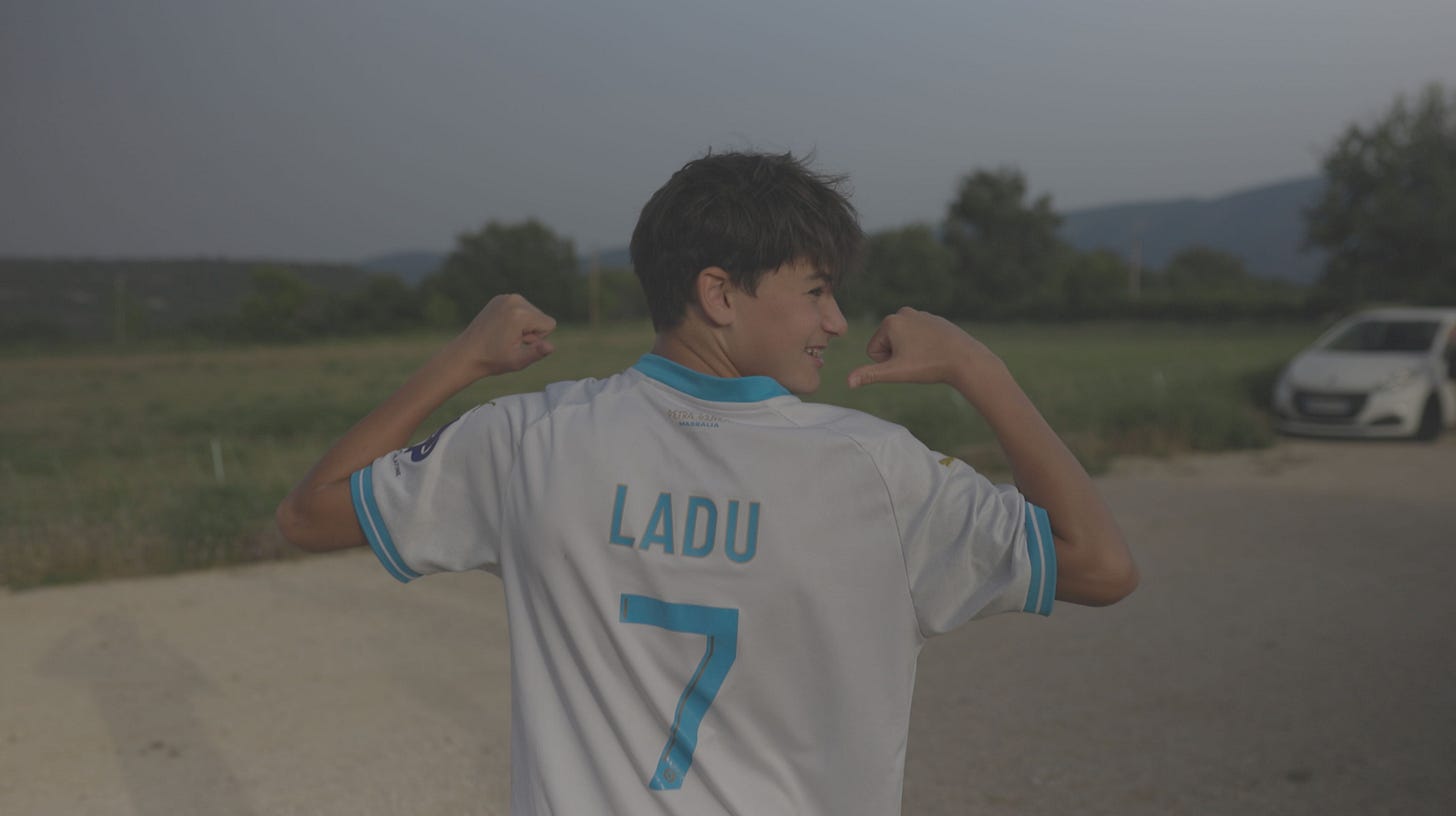
We return to the cheese-making room with milk still warm from the udder and natural, ambient heat, ready for it to be transformed into cheese, where natural starter culture from the previous whey is added to aid controlled acidification of the raw milk. A technique old as time.
“David! Shall I close the doors? The flies are getting in!”
“Sure, if you like. But Max… la mouche, c’est la vie”
I feel deep appreciation for David in this moment, and the sense of freedom that came over me through the day. I was acclimatising to nature, not fighting it like I had seen with many mainstream producers I have visited in the past, which was encapsulated so brilliantly in those final words. Delivered with such relaxed, calm confidence, they resonated with me as a kind of common thread that runs through the more ancient recipes and makers I have come across.
The milk’s natural transformation is simply helped along by David, where nature, at all stages, is accepted and encouraged. Microbes, flies, yeasts and moulds are shepherded, just like his herd. It’s this feeling that David has of just allowing everything to be. Everything belongs with congruence on the plateau. It all runs in symbiosis, where all is calm and natural. He carries the clout of the wisdom of ages and for me, holds a mirror to the stifling systems we yield to now.
We ate soupe au pistou for lunch, played guitar with coffee and cigarettes after a siesta in 40 degrees, and danced in the night to a blues band. Fuck me, they’ve got it right I tell you!
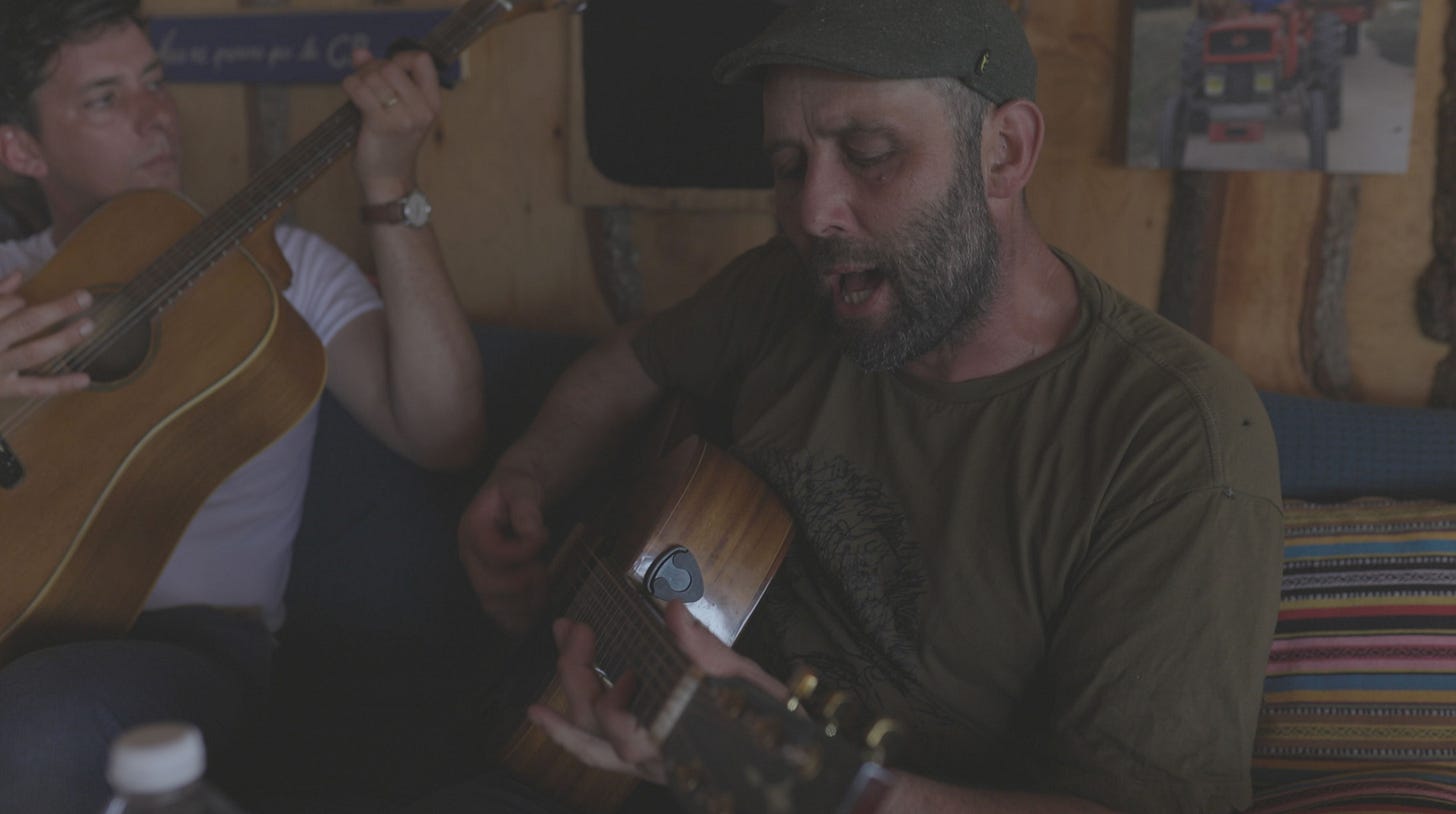
On the way home from the farm, I pulled off towards a town to look for batteries for my zoom recorder. With no shops to be found in the ancient and empty medieval town of Simiane La Rotonde, all tight angles, archways and cobbled streets, I let my imagination populate it with the lives of another era as I smelled my hands, sticky and oily with lanolin from the udders when I was milking a few ewes from David’s herd earlier. A timeless, forever kind of smell that will outlive us all.
I thought of value in scarcity. I imagined a time where, before the ability to record sound at all, how music would have reflected this idea too. It’s not just food. How you would be lucky to be in the presence of a musician just to be able to hear music at all, and its subsequent heightened appreciation as when it ends, it ends, like a withered flower once in bloom. And each musician was unique, how fortunate one must have felt to be in the presence of a gifted player in a specific place, performing songs of the region they picked up according to how they lived their life, whose unique tones from one of a finite number of physical instruments made by an artisan luthier would bounce off the walls of a space built for music by an architect. It would have imbued life with tremendous depth and richness, and reminded us in that magical and fleeting moment, exactly how wonderful and precious everything is. And then it is gone.
So it’s not just cheese or smoked fish we are eating when we come across true food, but what we consume is the very person that made it. And that, right there, is what it’s all about. Perhaps one day, when Sally is gone to the shiny shoals in the sky, I hope again to carry the flame and take up wild salmon smoking with the knowledge that was imparted to me, and the person I have become. But Sally’s fish, will be gone. As will the cheeses of David and Fanette and François and Vanessa, along with hundreds of other makers who are living to transform their landscape into food to live by, until they too, are gone.
And I think that this is how it should be. I celebrate the unnerving idea that there will only ever be a finite number of these foods made. How each one I eat is one less from a fixed number, and in the knowledge that nothing is forever, it might help us remember that life is full of things to feel joy and be grateful for, that can help us fall in love again with living, excited and hopeful for the new true foods that will become.
What an amazing world.
I know what I am going to do.
Keep reading with a 7-day free trial
Subscribe to Up There The Last to keep reading this post and get 7 days of free access to the full post archives.




